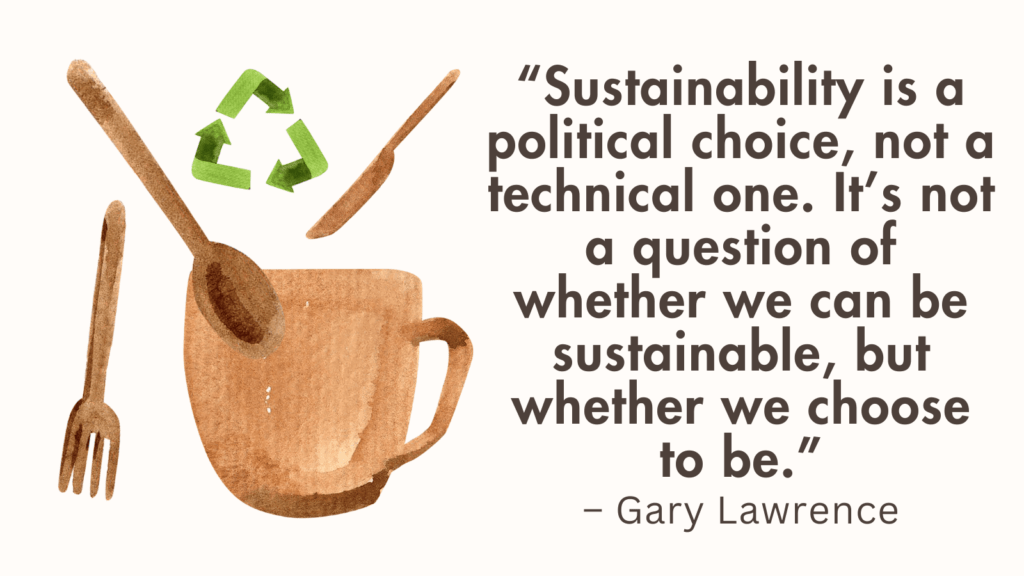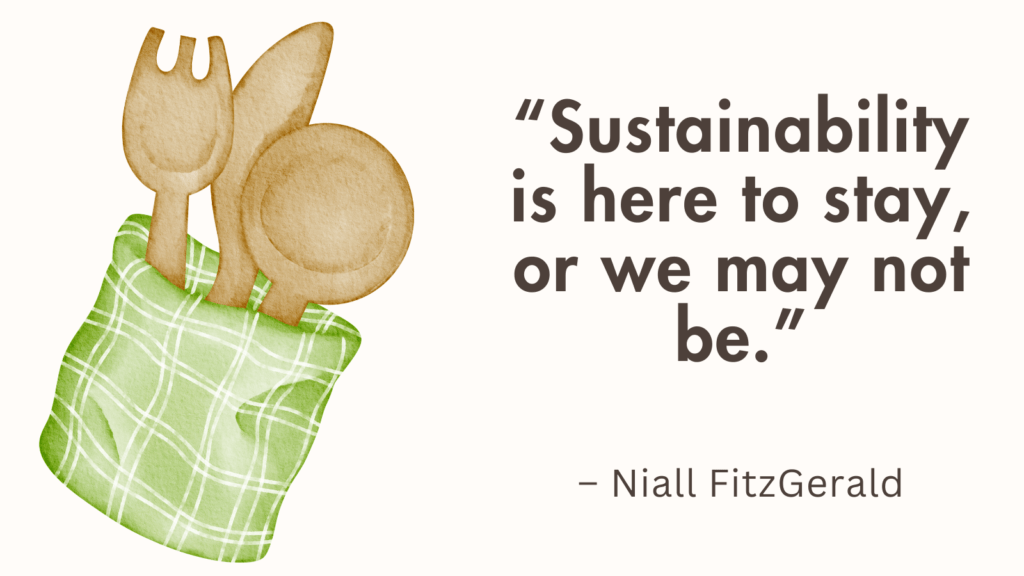In this post, you’ll find the answer to the question: “does sustainable mean eco friendly?”
What Is Sustainability?
Sustainability refers to the concept of meeting the needs of the present generation without compromising the ability of future generations to meet their own needs.
It involves finding a balance between social, economic, and environmental factors to ensure long-term well-being for both people and the planet.
Sustainability encompasses the responsible use of resources, conservation of biodiversity, reduction of pollution and waste, equitable distribution of resources, and consideration of social justice issues.
It focuses on promoting actions and practices that support the health and vitality of ecosystems, communities, and economies, both now and in the future.
What Is Environmental Sustainability?
Environmental sustainability refers to the practice of using natural resources in a responsible manner to minimize harm to the environment and protect it for future generations.
It involves creating a balance between human activities and the natural world, ensuring that the resources we utilize are not depleted or degraded beyond their ability to regenerate.
Environmental sustainability entails reducing pollution, conserving energy and water, minimizing waste, preserving biodiversity, and promoting a healthy ecosystem.
What Does Eco Friendly Mean?
“Eco-friendly” or “environmentally friendly” refers to products, practices, or actions that are not harmful to the environment.
It implies that these items or activities have been designed or implemented in a way that minimizes their negative impact on the planet.
Eco-friendly products and practices aim to reduce pollution, conserve resources, and promote sustainability.
For example, eco-friendly products are often made from sustainable or renewable materials, such as organic cotton or bamboo, and may use environmentally safe production methods.
These products are typically biodegradable, recyclable, or compostable, meaning they can be broken down and returned to the natural environment without causing harm.
Choosing eco-friendly options helps protect the environment, reduce our carbon footprint, and contribute to a more sustainable future for all.
Related: How To Shop Sustainably On A Budget?
Does Sustainable Mean Eco Friendly?
Yes, sustainable and eco-friendly are closely related concepts, but they have slightly different meanings.
While both concepts aim to minimize harm to the environment, sustainable refers to practices that can be maintained over the long term without depleting resources or damaging ecosystems.
On the other hand, eco-friendly specifically focuses on reducing the environmental impact of a product or activity.
Strategies to Promote Sustainable and Eco Friendly Living
There are several strategies you can adopt to promote sustainable and eco-friendly living. Here are some examples:
1. Reduce, reuse, and recycle
Practice the 3 R’s by reducing your consumption, reusing items whenever possible, and recycling materials such as paper, plastic, glass, and metal.
2. Conserve energy
Turn off lights and appliances when not in use, switch to energy-efficient lighting, and use programmable thermostats to regulate heating and cooling.
3. Save water
Fix leaks, install low-flow fixtures, take shorter showers, and collect rainwater for plants or other non-potable uses.
4. Choose sustainable transportation
Use public transit, carpool, bike, or walk whenever feasible.
If you need a vehicle, opt for fuel-efficient or electric cars.
5. Eat sustainably
Choose locally grown, organic, and seasonal foods to reduce the carbon footprint associated with transportation and pesticide use.
Minimize food waste by planning meals, composting, or donating excess food.
6. Support eco-friendly products
Look for products that are made from sustainable materials, have minimal packaging, and are certified as environmentally friendly.
7. Opt for renewable energy sources
Consider installing solar panels or purchasing green energy options from your utility provider to reduce reliance on fossil fuels.
8. Plant trees and support green spaces
Trees absorb carbon dioxide, provide shade, and improve air quality.
Support local parks and community gardens to create more green spaces.
9. Educate yourself and others
Stay informed about environmental issues, participate in local initiatives, and share your knowledge with others to raise awareness and encourage sustainable practices.
10. Advocate for change
Engage with local government and influential organizations to support policies and initiatives that promote sustainability and protect the environment.
Remember, small changes in daily habits can make a significant difference collectively.
By adopting these strategies, you can contribute to a more sustainable and eco-friendly lifestyle.
Related: How To Eat Sustainably On A Budget?
How Can Recycling Materials Lead To Environmental Sustainability?
Recycling materials plays a significant role in promoting environmental sustainability. Here’s how it contributes:
1. Conservation of Resources
Recycling reduces the need for extracting and processing raw materials from the Earth.
By reusing materials such as paper, plastic, glass, and metal, we can conserve natural resources like forests, oil, and minerals.
This conservation helps in preserving ecosystems and reducing habitat destruction.
2. Energy Savings
Recycling often requires less energy compared to producing products from virgin materials.
Manufacturing goods from recycled materials can save substantial amounts of energy, reducing greenhouse gas emissions and combating climate change.
For example, recycling aluminum cans saves up to 95% of the energy required to produce new cans from bauxite ore. (source)
3. Waste Reduction
Recycling diverts waste from landfill sites, helping to minimize pollution and the release of harmful substances into the environment.
Landfill sites produce methane, a potent greenhouse gas implicated in global warming.
By recycling, we can reduce the amount of waste sent to landfills and mitigate its negative environmental impact.
4. Reduced Air and Water Pollution
Many manufacturing processes involved in creating products from virgin materials release pollutants into the air and water.
Recycling minimizes the need for these processes, thereby decreasing pollution levels.
This, in turn, improves air quality, protects water sources, and benefits both human and ecological health.
5. Economic Benefits
Recycling creates economic opportunities through job creation in the recycling industry.
It promotes a more circular economy by closing the loop on material use, reducing dependence on expensive imports of raw materials, and boosting local economies.
6. Education and Awareness
Promoting recycling encourages public education and awareness about the importance of resource conservation and environmental sustainability.
It fosters a mindset of responsible consumption, waste reduction, and a greater appreciation for sustainable practices among individuals and communities.
Conclusion
While sustainability encompasses a broader approach that considers social and economic aspects alongside the environment, being eco-friendly directly concentrates on actions that minimize negative impacts on the environment.
However, both terms ultimately strive for practices that support the well-being of our planet and future generations.
To achieve environmental sustainability, it is important to adopt sustainable practices such as transitioning to renewable energy sources, implementing conservation measures, promoting recycling and reusing materials, protecting natural habitats and ecosystems, and practicing sustainable agriculture and forestry.
By making conscious choices in our daily lives and supporting environmentally friendly initiatives, we can help create a more sustainable future for our planet.



